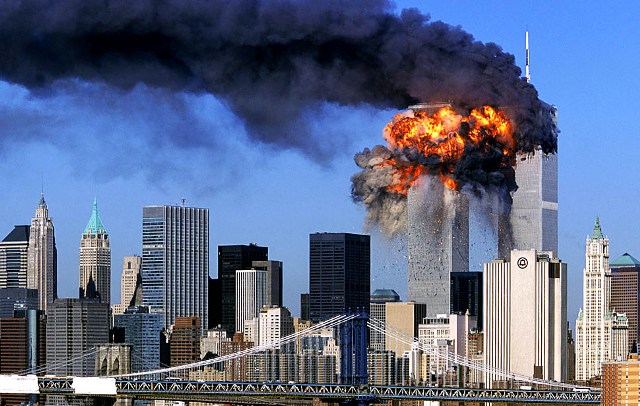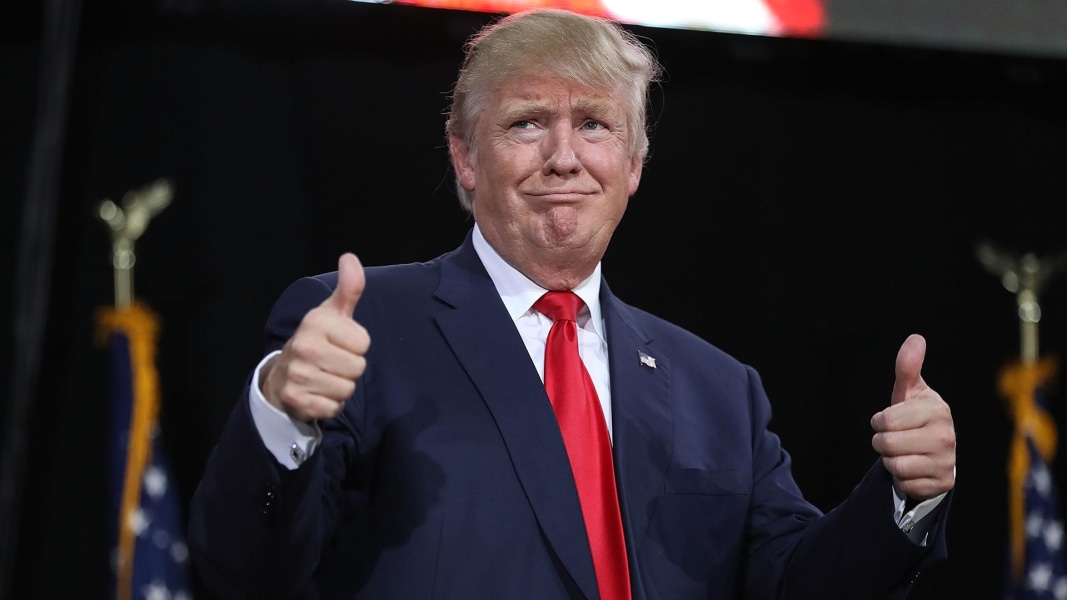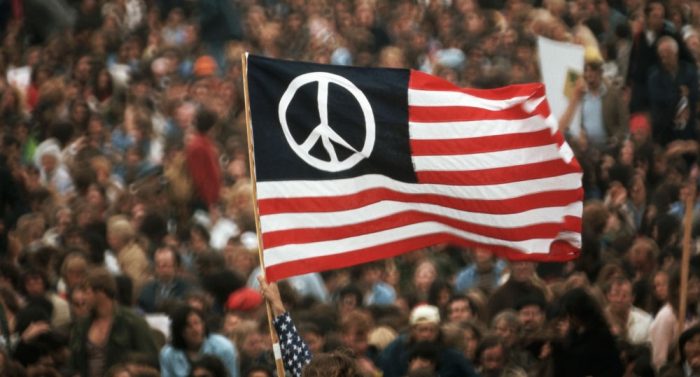By Javiera A. Morales-Reyes
President Roosevelt and President Bush’s Response to Two of America’s Greatest Foreign Attacks: Pearl Harbor (1941) and The World Trade Center (2001)

The biggest attacks that the United States has seen occurred at Pearl Harbor, Hawaii on December 7, 1941, and at the World Trade Center, New York on September 11, 2001. These two attacks took many American lives and left the nation in disarray. It is during these times that the President of the United States must take a stand and comfort the nation. During World War II, President Franklin D. Roosevelt was in charge of comforting the nation after the major Japanese attack on Pearl Harbor, Hawaii. Similarly, President George W. Bush was in charge of reassuring the American people after the terrorist attack on the World Trade Center and the Pentagon in 2001. In spite of both addresses being delivered through different mediums and circumstances, these Presidents were still able to turn American’s worries and fear into hope and nationalism by appealing to world peace, patriotism, and religion. Even though these attacks happened sixty years apart and two different political parties were in control of Congress, both Presidents connected to the American people and demonstrated that they were fit to lead not only during times of peace but also during times of war and violence. This is extremely relevant in present-day where the current administration is carelessly starting conflicts with foreign countries, which can potentially lead to a nuclear catastrophe.
On December 9, 1941, two days after the attack on Pearl Harbor, President Roosevelt delivered one of his most memorable fireside chats. Roosevelt delivered his first fireside chat in 1933 where he addressed the banking crisis.  Through this address, “millions of people found comfort and renewed confidence” (“History.com Staff”). In the 1930s, about 90%of all American families owned a radio. They would listen to President Roosevelt talk about a variety of issues, ranging from the unemployment rate to fascism to building up the American military. Even though Roosevelt was speaking from the Oval Office, the American people forgot about that and focused on how much he could connect with the common folk (“History.com Staff”). This intimacy between the Commander in Chief and the American people allowed President Roosevelt’s address to resonate greatly with his audience. He would use the most basic language possible and called the listeners his “friends” and his “family,” which connected him to his people even more (“History.com Staff”). This reassurance was extremely important since World War II had been raging for over two years. People were worried of getting unnecessarily dragged into an international issue, and after the attack on Pearl Harbor, Roosevelt needed to find a way to justify America’s entry into the war.
Through this address, “millions of people found comfort and renewed confidence” (“History.com Staff”). In the 1930s, about 90%of all American families owned a radio. They would listen to President Roosevelt talk about a variety of issues, ranging from the unemployment rate to fascism to building up the American military. Even though Roosevelt was speaking from the Oval Office, the American people forgot about that and focused on how much he could connect with the common folk (“History.com Staff”). This intimacy between the Commander in Chief and the American people allowed President Roosevelt’s address to resonate greatly with his audience. He would use the most basic language possible and called the listeners his “friends” and his “family,” which connected him to his people even more (“History.com Staff”). This reassurance was extremely important since World War II had been raging for over two years. People were worried of getting unnecessarily dragged into an international issue, and after the attack on Pearl Harbor, Roosevelt needed to find a way to justify America’s entry into the war.  This fireside chat was four pages long, compared to his usual two-to-three page chats, which in itself shows the importance of what he was saying. Roosevelt had a tough job: he had to comfort his people all the while trying to convince them that going to war was a good thing. He had no time constraints and could talk for a long time, and most people would actually listen. This was the only way that they could get legitimate information, other than orally which could lead to the development of rumors/inaccurate information.
This fireside chat was four pages long, compared to his usual two-to-three page chats, which in itself shows the importance of what he was saying. Roosevelt had a tough job: he had to comfort his people all the while trying to convince them that going to war was a good thing. He had no time constraints and could talk for a long time, and most people would actually listen. This was the only way that they could get legitimate information, other than orally which could lead to the development of rumors/inaccurate information.
The delivery and length of President Roosevelt’s address is a stark contrast to President Bush’s televised address immediately following the events at the World Trade Center on September 11, 2001. After the attack, President Bush delivered an address to the American people that only one page in length. Unlike 1941, the main way that people got information was through the television, which is still true today, besides social media. Unlike Roosevelt’s long fireside chat, Bush’s address was only four-and-a-half minutes long and focused heavily on American values. President Roosevelt spoke on and on about America’s future actions in the war and listed specific actions and events. However, Bush did not have the time to do this. He opened his address by saying, “Today our fellow citizens, our way of life, our very freedom came under attack in a series of deliberate and deadly terrorist acts” (Bush 2001).
Unlike 1941, the main way that people got information was through the television, which is still true today, besides social media. Unlike Roosevelt’s long fireside chat, Bush’s address was only four-and-a-half minutes long and focused heavily on American values. President Roosevelt spoke on and on about America’s future actions in the war and listed specific actions and events. However, Bush did not have the time to do this. He opened his address by saying, “Today our fellow citizens, our way of life, our very freedom came under attack in a series of deliberate and deadly terrorist acts” (Bush 2001).  Because his address happened almost immediately after the attack, he did not sufficient information to speak about what exactly happened and why it happened: all he knew was that there was a deadly attack. This event led to the War or Terrorism, but at the time of the attack, people were just confused and scared and weren’t thinking about declaring war (something that Bush would do within the next couple of years). Unlike in 1941, there was no global war in the background, which is why 9/11 came as an immense surprise to most people. Yet, he was able to get people to unite under a common cause and give them comfort.
Because his address happened almost immediately after the attack, he did not sufficient information to speak about what exactly happened and why it happened: all he knew was that there was a deadly attack. This event led to the War or Terrorism, but at the time of the attack, people were just confused and scared and weren’t thinking about declaring war (something that Bush would do within the next couple of years). Unlike in 1941, there was no global war in the background, which is why 9/11 came as an immense surprise to most people. Yet, he was able to get people to unite under a common cause and give them comfort.
One common thread that ties these two addresses is the idea of attaining world peace. Roosevelt had to justify America’s reason for entering WWII. The attack on Pearl Harbor was not technically a terrorist attack, but it certainly felt like one. Roosevelt made it clear in his address that the United States was responsible for preventing acts like this from occurring again, whether they happened in a large country or a small country. Roosevelt declared that, “no American… need feel anything but pride in our patience and in our efforts through all the years toward achieving a peace in the Pacific which would be fair and honorable to every nation” (1941). The United States had been working towards bringing democracies to many nations that had been oppressed, and by having a democracy in place, freedom and liberty would eventually come. He made world peace seem so important by comparing the rise of Japan with the rise of Germany and Italy. He emphasized that “the course that Japan has followed for the past ten years in Asia has paralleled the course of Hitler and Mussolini in Europe and in Africa” (1941). The destruction that Hitler and Mussolini were causing around the globe , and their actions were threatening the democracy that makes America great and safe. Roosevelt made it clear that World War II was not about “vengeance, but for a world in which this Nation, and all that this Nation represents, will be safe for our children” (1941). However, the United States was not involved in any wars when the terrorist attack occurred. The threat that Bush was talking about was not completely present until it physically attacked the nation. Before this attack, the idea of terrorism seemed like a far-off problem that would never taint the soils of a peaceful and free America. However, now that there was an actual attack, Bush began to focus on a war on terrorism. Bush said that “America and our friends and allies join with all those who want peace and security in the world, and we stand together to win the war against terrorism” (2001). Now that the United States had become a specific target for terrorism, the country must step-up and protect other nations from attacks like these. Similarly to Roosevelt, Bush was coaxing the nation into a war that he would later declare on Iraq and Afghanistan. Not only did these two leaders offer comfort for their nation, they also made the future actions of the country seem necessary in order to maintain world peace. By making the aftermath of these terrible events about world peace, the people of the nation could look forward to a just future and became fueled to do something about their current situation. That’s something that a true leader needs: inspiration, which is exactly what Roosevelt and Bush gave the nation.
A major part of being an apt and powerful leader is being able to deal with foreign attacks. This is something that both Presidents Roosevelt and Bush were able to do. President Roosevelt helped ease America into an international war that had been raging for two years. He delivered a speech that emphasized the government’s future actions in this war, which relieved people’s worries about the war, even if this relief was only temporary. The country was in disarray and he was able to unite his people and gain the support that he needed to go to war. This is an extremely important quality for every president to have, especially in present day, since we live in a nuclear age where war sometimes seems to be at our doorstep. The attack on September 11th pushed the United States towards war, as it was unforeseen and deadly. President Bush was able to deal with an attack that came out of nowhere and shook the foundations of the country. The attack on the World Trade Center was not an official act war, but was indeed a terrorist attack that would foreshadow the War on Terrorism and America’s involvement in Afghanistan and Iraq. Although there are some that may criticize President Bush’s decision to declare war in the Middle East, he was still able to do what President Roosevelt did: unite the American people in times of violence. This demonstrates how despite leading the United States sixty years apart, both Presidents led the country by uniting the people and preparing them for a future that was unclear. This is a quality that the current administration seems to lack. With very action that they take to “destroy ISIS” or bring world peace, their actions seem to cause even more divisions within nations and the American people themselves, instead of unity. There are already so many things that separate the American people, and a constant fear of war or foreign conflicts makes these divisions even harder to deal with. We need a President that is able to unite the American people during times of doubt and fear, not separate them just to prove America’s sovereignty to the rest of the world.
This is a quality that the current administration seems to lack. With very action that they take to “destroy ISIS” or bring world peace, their actions seem to cause even more divisions within nations and the American people themselves, instead of unity. There are already so many things that separate the American people, and a constant fear of war or foreign conflicts makes these divisions even harder to deal with. We need a President that is able to unite the American people during times of doubt and fear, not separate them just to prove America’s sovereignty to the rest of the world.
Bibliography
Franklin D. Roosevelt: “Fireside Chat.,” December 9, 1941. Online by Gerhard Peters and John T. Woolley, The American Presidency Project.
History.com Staff. “The Fireside Chats.” History.com. A&E Television Networks, 2010. Web. 23 Mar. 2017.
George W. Bush: “Address to the Nation on the Terrorist Attacks,” September 11, 2001. Online by Gerhard Peters and John T. Woolley, The American Presidency Project.


